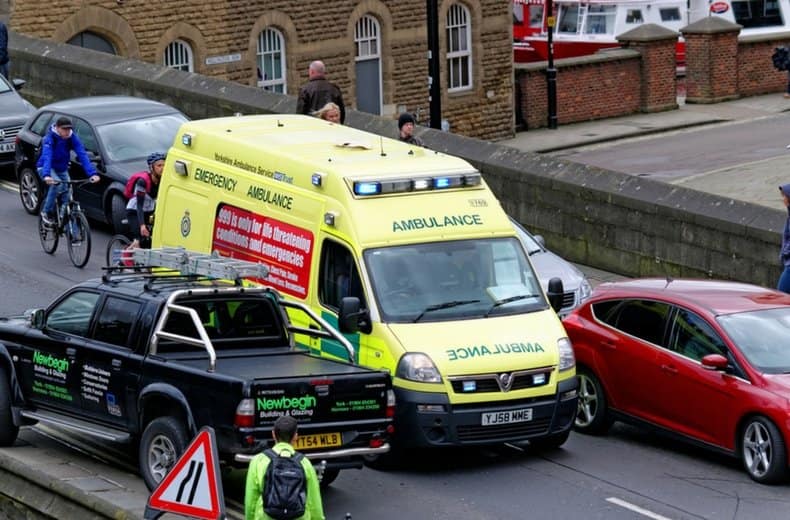But if you’re not careful, your best intentions could still see you hit with a hefty fine.
This is because road laws still apply in the event of encountering an emergency vehicle and you will still need to comply with relevant UK road signs.
Fixed penalty notices

Examples that could see you be hit with a heavy fine include: entering a bus lane, stopping in a yellow box junction or driving through a red traffic light.
As CCTV cameras are increasingly being used to fine motorists for offences such as these – especially in city centres – getting out of the way for an ambulance, police car or fire engine may not exempt you from paying fines.
As an example, you could be hit with a fixed penalty notice for £100 and three penalty points on your licence for jumping a red light – even if it’s at low speed to get out of the way of an emergency vehicle.
If it goes to court, the penalty could be even bigger.
The Highway Code

If you are approached by an emergency vehicle when driving, rule 219 of the Highway Code says: “You should look and listen for ambulances, fire engines, police, doctors or other emergency vehicles using flashing blue, red or green lights and sirens or flashing headlights, or Highways Agency Traffic Officer and Incident Support vehicles using flashing amber lights.
“When one approaches do not panic.
"Consider the route of such a vehicle and take appropriate action to let it pass, while complying with all traffic signs.
"If necessary, pull to the side of the road and stop, but try to avoid stopping before the brow of a hill, a bend or narrow section of road.
"Do not endanger yourself, other road users or pedestrians and avoid mounting the kerb.
"Do not brake harshly on approach to a junction or roundabout, as a following vehicle may not have the same view as you.”

RAC sale – up to 33% off*
• Roadside cover from £5.29 a month†
• We get to most breakdowns in 60 mins or less
• Our patrols fix 4/5 breakdowns on the spot

So the key is not to panic and always stay alert when driving.
Resist temptation to stop in the middle of the road – this could block the route for the emergency vehicle – or to jump up the kerb.
Keep driving until there’s a suitable place to pull over and use your common sense to avoid coming into conflict with other road users.
It is important that people are aware of this advice so they can ensure they take the correct action when encountering an emergency services vehicle.
If people panic and do not obey traffic laws, this could result in an incident which could endanger more lives or further impede the emergency service from getting through.
The issue of people taking the wrong action and then facing a fine is a common one and something our legal advice team regularly deal with.
If you are issued with a fine that you feel is unfair because you were getting out of the way for an emergency vehicle, you may be able to appeal it.
RAC Members are entitled to free legal advice and support through our 24/7 legal helpline.
Contact them on 0330 159 1446 to discuss this matter further.
While you shouldn’t break the rules of the road even in this situation, people have previously had fines waived for minor offences such as entering a bus lane to let a police car past.
What does it mean when an ambulance is silent with lights on?
When an ambulance is using its lights but not its siren, it typically indicates that the emergency vehicle is responding to a situation where it needs to be visible to other drivers for safety reasons, but the noise of the siren isn't necessary at that moment.
This might occur in a variety of scenarios, such as when the ambulance is traveling through a quiet area or when it’s arriving at a scene where the noise might be disruptive.
Scenarios include late at night, when they are already at the scene of the incident, or if there are cyclists, horse riders or other road users in potentially vulnerable positions.
By keeping the siren on, it ensures that they can navigate traffic safely without unnecessary disturbance.
What colour are ambulance lights?
In the UK, ambulance lights are predominantly blue, often accompanied by flashing white lights.
The use of blue lights is standard for emergency vehicles to indicate urgency and to alert other road users.

RAC sale – up to 33% off*
• Roadside cover from £5.29 a month†
• We get to most breakdowns in 60 mins or less
• Our patrols fix 4/5 breakdowns on the spot

















